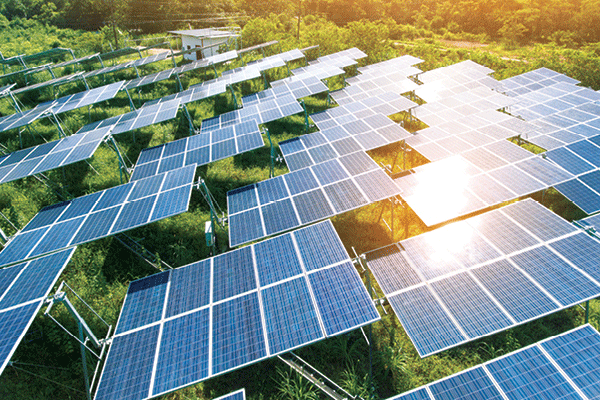
The Thai government recently launched Thailand 4.0, an economic model designed to get the country out of the middle-income trap. The move has placed much emphasis on the country’s sustainable growth and development with a greater concern towards the environment, and this, in turn, is influencing the country’s energy M&A landscape.
As a developing economy, Thailand today is hungry for energy, and so it is no surprise that dealmaking in this space has been active. According to lawyers, since the start of 2017, Thailand’s energy sector has seen increased private equity investments, with many of the investors hailing from the U.S., Japan, and Hong Kong.
But the dealflow is not just inbound. According to law firm Chandler MHM Limited Thai energy companies are making outbound investments not only into neighboring Southeast Asian countries such as Malaysia, the Philippines, Indonesia, Myanmar and Laos, but have also ventured farther to places such as Europe. A recent example is an M&A transaction involving a major Thai energy company’s investment in a top international retail-wholesale group with businesses across Europe, which the law firm has advised on.
At present, Thailand’s energy consumption largely depends on imported fuel supplies, making it the ninth-largest consumer globally. The country is said to import about 80 percent of its crude oil needs and 40 percent of natural gas annually. Fossil fuels make up 80 percent of the country’s total commercial primary energy consumption as well as 90 percent of its electricity production.
But that is set to change as investors display continuing interest in renewable energy such as solar and wind energy. Power generation using biomass, biogas and waste is also a priority for the Thai government, which is also encouraging community energy production and reduction in the usage of fossil fuels.
MOVING TO GREEN
One of the key drivers of this trend is the Thai government’s move to promote “Thailand 4.0,” which aims to boost the country’s economy as well as bring it out of the middle-income trap. Thailand has also amended its Investment Promotion Act, enacted its Competitiveness Enhancement Act, and updated several sections of its Public Limited Companies Act.
In addition, “Thailand’s position in Southeast Asia as the leader in promoting renewable energy projects focusing on solar power in large utility-scale applications have worked in its favor,” says Ratana Poonsombudlert, senior partner at Chandler MHM.
Further, , the Thai government’s Feed-in Tariff (FiT) pricing mechanism programme is designed in such a way that it pays renewable energy producers for each unit of energy contributed to the national electricity grid.
This mechanism replaces the former adder programme, which offered renewable energy producers an additional premium to the wholesale electricity price, thereby giving a boost to the renewable energy sector in the country.
REMOVING OBSTACLES
However, the path to renewable energy is not that simple. Due to Agricultural Land Reform Office, or “Sor Por Kor” land issues, several major wind farm projects and petroleum concession projects have been delayed, in part, due to recent Supreme Administrative Court rulings that curtailed such developments on land designated for farming purposes only.
To resolve this issue, the Prime Minister, in his capacity as head of the National Council for Peace and Order, invoked power under the Charter to relax the usage of such land for public benefit purposes, and in particular, to allow three main business activities, i.e. oil fields, wind farms, and mining to proceed, on such land whereby a new implementing regulation will be issued by the Agricultural Ministry within 90 days from the date of the order.
Another key challenge comes from the framework for ground-mounted solar energy projects, in which a government agency or agriculture cooperative becomes the public partner or owner, and a private sector entity becomes the project supporter.
This challenge poses questions as to whether the agency or the cooperative has the legal authority to participate in such a project, and whether the public-private partnership (PPP) rules apply. Also, site acquisition on a conditional basis may present uncertainties.
“There are also other issues regarding site acquisition for solar projects. Issues have arisen regarding zoning limitations applicable to development of ground-based solar farms. There is uncertainty as to which land zones are made available for solar farm development. In general, land zoned for industrial use allows solar farm projects to be developed thereon,” adds Jessada Sawatdipong, also a senior partner of Chandler MHM.
In other land use zones, each area may have different rules regarding the use of land for the development of solar farms, with or without conditions. These depend on specific ministerial regulations or the local administrative organisation’s ordinances prescribed for such areas.
BUSY SPACE
A few of the areas in which Chandler MHM advises M&A clients, and particularly those involved in energy projects, include the general due diligence process, obligations under project finance documentation, shareholder restructuring due to regulatory and contractual limitations, share sale and purchase agreements, shareholder agreements, and site-related issues.
“Based on our on-going and recent client activity,” adds Hunt Talmage, a senior counsel at Chandler MHM, “our firm expects to see continuing investment interest in the renewable energy sector and in downstream chemical and petrochemical projects.”
In addition to M&A in the energy, natural resources and chemical sectors, the firm says it has noted increasing foreign direct investment in heavy machinery businesses, in the retail sector, in logistics and related services businesses, and in the food and beverages sector.



